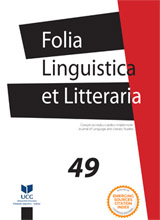MANY FACES OF A CHATBOT: THE USE OF POSITIVE AND NEGATIVE POLITENESS STRATEGIES IN ARGUMENTATIVE COMMUNICATION WITH A CHATBOT
MANY FACES OF A CHATBOT: THE USE OF POSITIVE AND NEGATIVE POLITENESS STRATEGIES IN ARGUMENTATIVE COMMUNICATION WITH A CHATBOT
Author(s): Gordana IvkovićSubject(s): Social Sciences, Economy, Communication studies, Theory of Communication, ICT Information and Communications Technologies
Published by: Filološki fakultet, Nikšić
Keywords: argumentation; politeness theory; positive and negative politeness strategies; chatbot; artificial intelligence
Summary/Abstract: With the ever-growing development of artificial intelligence, communication and argumentation processes are no longer limited to face-toface and computer-mediated communication with other humans. They now involve communication with machines. This fact has given rise to chatbots, computer programs trained to produce human-like communication through the use of highly specified algorithms. The aim of this study was to determine whether a chatbot has been trained in accordance with positive and negative face wants, which were a part of the politeness theory introduced by Brown and Levinson. More specifically, the aim was to determine whether positive and negative politeness strategies would affect the quality of answers a chatbot produces. The chatbot was asked 10 questions in total, grouped into five sets of questions that prompted answers followed by argumentation. Each set contained two questions on the same topic, one question asked utilizing positive politeness strategies, and the other question asked using negative politeness strategies. The results show that 1) there were no significant differences in the answers given to the two types of questions, 2) the chatbot did not select only one type of politeness strategies, 3) more elaborate answers to one of the questions from the sets were produced in relation to the topic of that question rather than the politeness strategies. The most dominant argumentation structure is based on coordinative arguments, with causal schemes appearing most frequently. All of the answers are acceptable in the sense that they give coherent arguments for a standpoint, except for one answer where the opposite standpoints were provided.
Journal: Folia Linguistica et Litteraria
- Issue Year: 2024
- Issue No: 49
- Page Range: 157-176
- Page Count: 20
- Language: English

